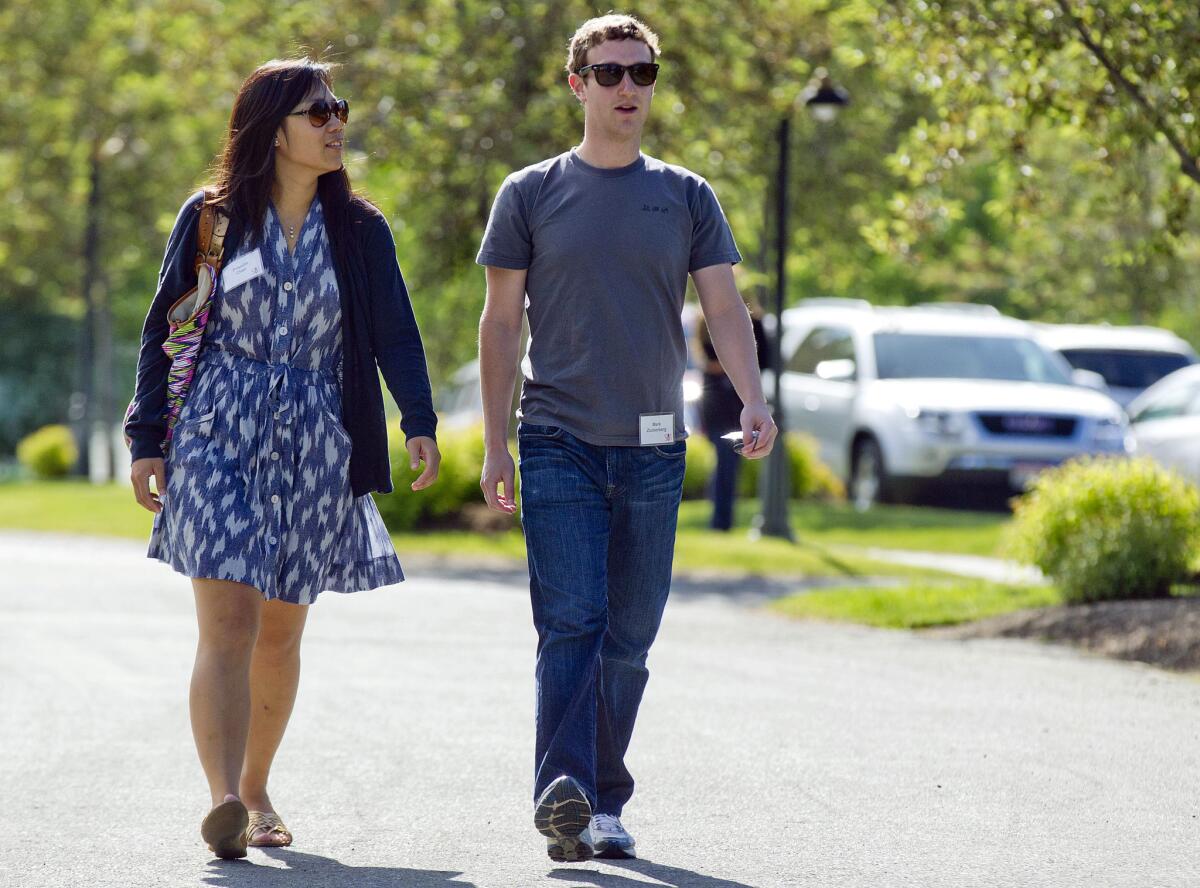A philanthropic revolution

In February, the Chronicle of Philanthropy unveiled its 2013 list of America’s top givers to charity. For the first time in history, the top living donors, Mark Zuckerberg and his wife, Priscilla Chan, gave their money ($996 million) to a donor-advised fund set up with the Silicon Valley Community Foundation.
- Share via
You’ve probably never heard of donor-advised funds, but they are taking over the philanthropic world.
It all started as a matter of economics. A million dollars to most of us is a lot of money. But as start-up cash for a philanthropic foundation it’s chump change. A million-dollar foundation can easily cost more to run than it gives away.
So an alternative was created by the IRS to give modest philanthropic efforts a cheaper, easier path to existence, bundling them together under an umbrella nonprofit for investment and management. A donor-advised fund offered the wannabe philanthropist the same tax deductions as a foundation but without the red tape and with maximum donor control. No annual disbursement was required; no annual report either. The money can come in and go out whenever, however and to whomever the donor likes.
Call it foundation lite. It’s swiftly becoming the philanthropic delivery system of choice for the wealthy.
In February, the Chronicle of Philanthropy unveiled its 2013 list of America’s top givers to charity. For the first time in history, the top living donors, Mark Zuckerberg and his wife, Priscilla Chan, gave their money ($996 million) to a donor-advised fund set up with the Silicon Valley Community Foundation.
They were followed by donor couple No. 2, John and Laura Arnold ($296 million). The Arnolds, who have a traditional foundation, nonetheless put some of their largesse into a “giving account” with the Fidelity Charitable Gift Fund, a collection of donor-advised funds run by Fidelity Investments. Just a few clicks down the list was Alfred Mann’s $70-million gift to his donor-advised fund in the Nevada Community Foundation.
These figures, impressive as they are, could be seen as an anomaly and not an indicator of a philanthropic revolution. But there’s more. Fidelity Charitable, for example, is now the second-largest nonprofit organization in the United States — bigger than the Boy Scouts, bigger than the Red Cross, bigger than the Salvation Army. Another similar donor-advised fund manager, the Schwab Charitable Fund, raised more money last year than Harvard.
It was Fidelity, in fact, that kick-started the revolution. When the IRS first established donor-advised funds, they were the philanthropic stepchildren of community foundations, whose boards and staffs considered them something of a nuisance. Ned Johnson, the canny founder of Fidelity, saw them as an opportunity to invest billions of charity dollars. He trained his staff to tout the advantages for donors and ran full-page ads in Time, New Yorker and Smithsonian magazines. Money poured into Fidelity, to copycat efforts at other investment houses, and to community foundations too.
Not that there hasn’t been a backlash. The most common complaint, leveled by Boston College Law School’s Ray Madoff and others, is that without minimum-disbursement rules and reporting requirements, donor-advised funds have the potential to become shadowy charity warehouses, allowing a Mark Zuckerberg to get a tax deduction immediately, and then take years or even decades to distribute the funds to charity.
In fact, those fears appear to be unfounded. According to a recent study conducted by the National Philanthropic Trust, a provider of donor-advised funds, around 11% of the assets in such funds are disbursed every year, more than double the 5% payout requirement of private foundations. By law, once a donor gives money to a donor-advised fund, it may never be retrieved and must be spent only for philanthropic purposes. Besides, why someone would give away a dollar just to get a tax deduction of, at most, 39 cents defies logic. Zuckerberg isn’t putting aside a billion dollars to a donor-advised fund just to sit on it.
There are some drawbacks, however. Donor-advised funds put a thumb on the scale of the always precarious balance of power between grant seeker and donor. They don’t publish mission statements or set up application procedures, which leaves nonprofits and individuals no easy way to target funding sources or make their appeal.
As a career fundraiser, I learned that people cannot be forced to be charitable, but it helps to remove the barriers to giving. Donor-advised funds are an easy in, easy out way to give away money.
Love it or hate it, the philanthropic revolution is on and donor-advised funds are winning.
Jack Shakely is president emeritus of the California Community Foundation in Los Angeles and senior fellow at the Center for Philanthropy and Public Policy at USC.
More to Read
A cure for the common opinion
Get thought-provoking perspectives with our weekly newsletter.
You may occasionally receive promotional content from the Los Angeles Times.






